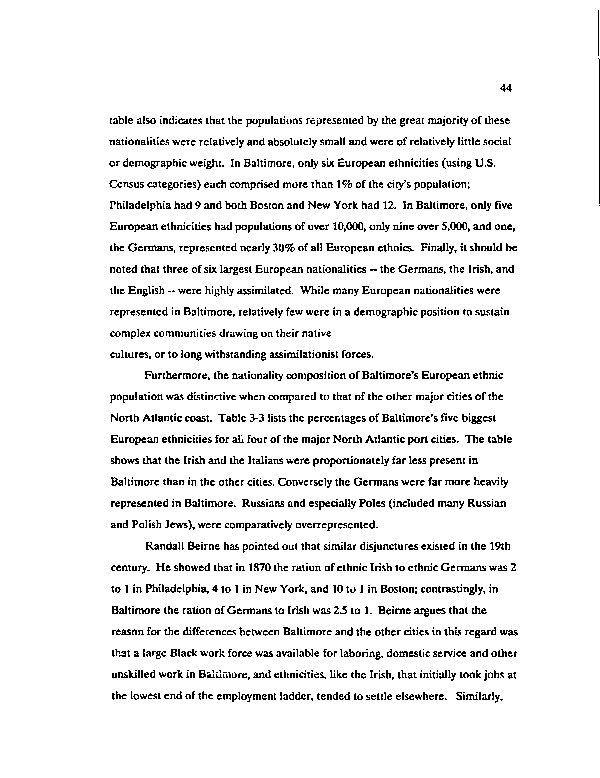|
44
table also indicates that the populations represented by the great majority of these
nationalities were relatively and absolutely small and were of relatively little social
or demographic weight. In Baltimore, only six European ethnicities (using U.S.
Census categories) each comprised more than 1% of the city's population;
Philadelphia had 9 and both Boston and New York had 12. In Baltimore, only five
European ethnicities had populations of over 10,000, only nine over 5,000, and one,
the Germans, represented nearly 30% of all European ethnics. Finally, it should be
noted that three of six largest European nationalities - the Germans, the Irish, and
the English -- were highly assimilated. While many European nationalities were
represented in Baltimore, relatively few were in a demographic position to sustain
complex communities drawing on their native
cultures, or to long withstanding assimilationist forces.
Furthermore, the nationality composition of Baltimore's European ethnic
population was distinctive when compared to that of the other major cities of the
North Atlantic coast. Table 3-3 lists the percentages of Baltimore's five biggest
European ethnicities for ah four of the major North Atlantic port cities. The table
shows that the Irish and the Italians were proportionately far less present in
Baltimore than in the other cities. Conversely the Germans were far more heavily
represented in Baltimore. Russians and especially Poles (included many Russian
and Polish Jews), were comparatively overrepresented.
Randall Beirne has pointed out that similar disjunctives existed in the 19th
century. He showed that in 1870 the ration of ethnic Irish to ethnic Germans was 2
to 1 in Philadelphia, 4 to 1 in New York, and 10 to 1 in Boston; contrastingly, in
Baltimore the ration of Germans to Irish was 2.5 to 1. Beirne argues that the
reason for the differences between Baltimore and the other cities in this regard was
that a large Black work force was available for laboring, domestic service and other
unskilled work in Baltimore, and ethnicities, like the Irish, that initially took jobs at
the lowest end of the employment ladder, tended to settle elsewhere. Similarly,
|

